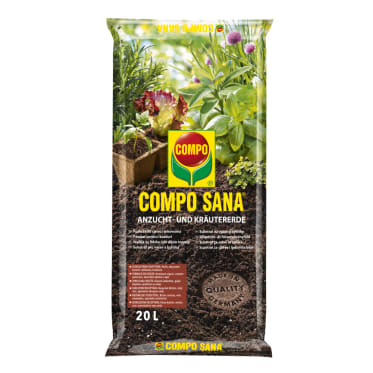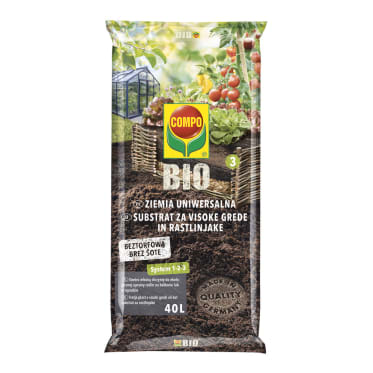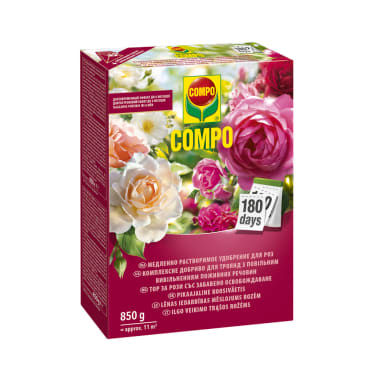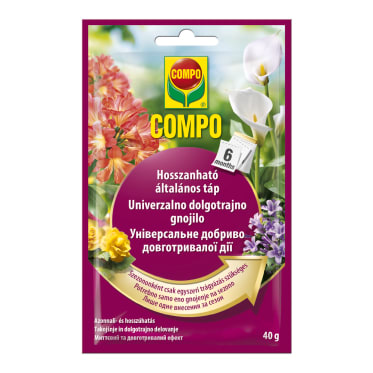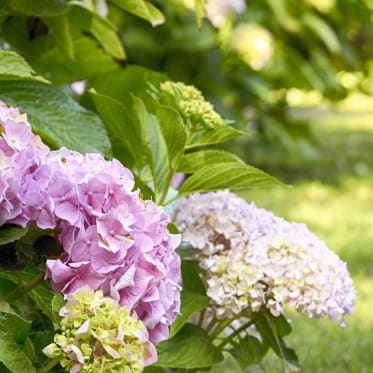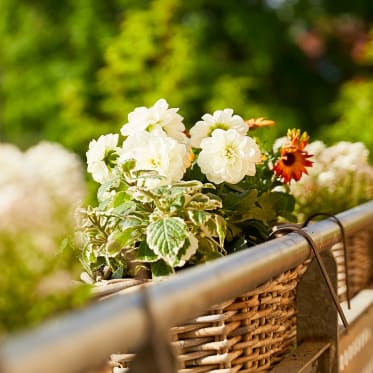Frequent search terms

- COMPO
- Guide
- Plant Care
- Garden
- Garden care
- Nine tips for gardening in March
Nine tips for gardening in March
When the last blankets of snow finally melt away in March and the first early flowers show their face, the start of spring isn't far away. If you can't wait to go back into your open-air living room, put on your gardening gloves and get started, either, we're talking about what jobs need to be done in the vegetable garden and flower garden at the start of the gardening season and offering our nine tips for gardening in March right here.
Table of content
Gardening in the vegetable garden
There's a lot of work to be done in the garden in March – from sowing in the cold frame to preparations outdoors and planting berries. And that's why we've compiled five key tips for your vegetable garden and snacking balcony.
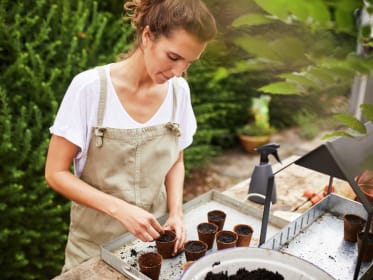
1. Pre-germinating vegetables in March
Even though temperatures outside are still wintery, the pleasure of gardening can begin indoors right now. March is the perfect month to pre-germinate tomatoes on the windowsill, for example. If you haven't already done so, all slow-growing vegetable plants, such as peppers and chillies or even eggplants, should be sown now at the latest.
The best option for sowing vegetables is a low-nutrient propagating soil such as the 'COMPO SANA® Potting Soil for Herbs and Seedlings' propagating and herb soil, as the little plants need a low-nutrient base. Otherwise, you need seed trays or pots for sowing, as well as a bright, warm windowsill and you're good to go! Depending on the type of vegetable, most seedlings can move to a container or vegetable patch in mild weather from the end of April to mid-May. Our advice article provides you with detailed instructions on how best to proceed if you want to pre-germinate vegetables.
By the way, if you want to pre-germinate potatoes, you can do that in March, too.
2. Gardening in raised beds
Before your vegetable plants can move outdoors, now it the right time to prepare your garden's beds, borders and raised beds for the new gardening season after the long winter months. Any plant leftovers or weeds and rootstocks should also be removed. Material used for protection in the winter, such as foliage, can be removed now, too. Now loosen the top layer of soil in your beds, borders and patches with a garden fork to improve aeration. This loosening work also improves the soil's water storage capacity, thus preventing waterlogging. If your raised bed has slumped, you should top it up with fresh raised bed soil.

3. Sowing vegetables in a cold frame
While many heat-loving vegetable plants in our part of the world wait longingly for the summer, some hardy vegetables that are less susceptible to frost can be sown in a cold frame from as early as March when the temperatures get warmer. For example, root vegetables such as radishes and carrots, as well as curled and cabbage lettuce or rocket will germinate at relatively low soil temperatures.
If you want to sow your vegetable plants in a patch or raised beds as part of a mixed crop, find out beforehand which species can be planted side by side. For example, radishes are very easy to care for and can be planted in a vegetable patch with carrots and lettuces with no problem at all.

4. Gardening in March: Planting berry bushes
Early spring is the ideal time to plant berry bushes such as raspberries, currants or gooseberries. Tip for planting in vegetable patches: Before planting, place the shrub's root ball in a bucket of water for a few minutes to allow it to soak up sufficient moisture. Now dig the planting hole, put the berry bush of your choice into it and then fill in the gaps with soil. Make sure the shrub's root ball is only as deep in the soil as it was before in the pot.
We recommend that you work some organic universal longterm fertilizer into the soil before planting to provide the plant with sufficient nutrients to grow.
If you only have a small garden or would prefer to plant your berries directly on the patio, no problem, as many berry bushes are very easy to grow in a pot. There are even special varieties that remain compact as they grow.
Note! Since blueberries and cranberries are so-called bog-soil plants, they need an acidic soil to thrive. That's why you should plant them in a special, low-pH rhododendron soil.
Gardening in ornamental gardens
Gardening can now also start in the ornamental garden. Your first beautiful plant arrangements for the container or balcony box can be conjured up in March, for example. Discover which spring flowers you can plant now, how to care for roses in March and which gardening work must be avoided in March in the following advice on gardening in ornamental gardens.
5. Planting spring flowers
You can start planting a variety of pretty spring flowers in March. From classic bulb flowers like the narcissus, crocus or hyacinth across pretty early flowers like the primrose, horned violet or pansy through to small liverworts, you're spoilt for choice. You can also add some beautiful perennials to your perennial bed in March. Inspiration for pretty spring plants can also be found in our advice article on 11 spring flowers for gardens and balconies.

6. Pruning and fertilising perennials
Your perennial bed is one corner of the garden you should definitely devote your attention to in March. Firstly, the perennial plants need to be pruned, and secondly, they need sufficient nutrients for new shoots after their long winter break.
The best time for pruning is when the weather is mild and the ornamental plants are just about to sprout again. Cut back the perennials until they are close to the ground. Note! For semi-shrubs like lavender, you should not cut into shoots that are already woody. If you cut into the wood, it's possible that the plant will not sprout there again.
Perennials need a lot of nutrients in the spring for growth and to produce flowers. To this end, we recommend that you work a universal longterm fertilizer into the soil in March. This slow-release fertiliser supplies the plants with all the nutrients they need for up to six months. The nutrient requirements differ depending on species. For example, plants with a high nutrient uptake, such as asters, dahlias, phlox or lilies, need a lot of energy. Accordingly, be sure to use the right amount.
7. Dividing perennials
The division of perennials that flower in the autumn, such as asters, should be part of your care routine before new shoots appear in the spring. Many perennial plants produce fewer flowers after several years and dividing them can act like a rejuvenation therapy, keeping your plants fit and healthy. Another advantage is that you can enjoy several beautiful specimens of your ornamental plant right away!

8. Pruning and fertilising roses
We recommend that you pamper your multi-flowering roses with some spring pruning, as this stimulates growth and flower formation. A good indication when pruning roses is to wait until the forsythia flowers. Diseased or withered shoots, as well as wild shoots emerging from under the grafting point can be removed directly so as to prevent pest infestations or diseases from breaking out. For more tips on how to cut roses properly, see our advice article on pruning roses.
After spring pruning, you should fertilise your roses. After all, roses need enough nutrients to form new shoots and beautiful flowers. You can use a special fertiliser for roses for this, such as the 'COMPO Slow Release Fertilizer for Roses'. It supplies roses with all nesseary nutrients for up to six months. Be sure to keep the root area of your roses moist after applying the fertiliser to enable it to achieve its full effect.
9. Hedges, etc. – which gardening jobs are prohibited in March?
Even though you may be tempted to do all your spring cleaning in the garden in one go, you must remember one important thing – one maintenance job in the garden is generally forbidden from 1 March to 30 September: cutting hedges. Germany's legislation on nature conservation states that hedges, living fences, bushes and other woody plants must not be cut back to the trunk, i.e. trimmed radically, during this period because hedges are important breeding and nesting sites for animals and birds from March onwards. But there's no need to worry, as simple pruning as part of maintenance or restoring shape is also permitted during this period.
Products for your ornamental garden and vegetable garden
You might also be interested in

